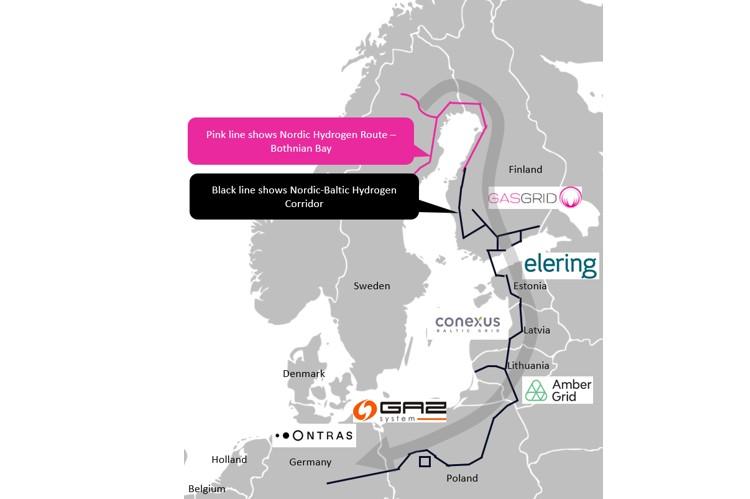Dream to Reality: Rumblings of a Hydrogen Corridor In Europe

Against a backdrop of dynamic and far-reaching changes presently taking place in a global energy market (which itself is in the throes of transition to a hydrogen infrastructure as well as the decarbonization of national economies), gas transmission systems operators (TSOs) in six Baltic states are collaborating to make the European Hydrogen Backbone (EHB) a reality.
This past week the European TSOs Gasgrid Finland (Finland), Elering (Estonia), Conexus Baltic Grid (Latvia), Amber Grid (Lithuania), GAZ-SYSTEM (Poland) and ONTRAS (Germany) signed a cooperation agreement to develop hydrogen infrastructure from Finland through Estonia, Latvia, Lithuania and Poland to Germany to meet REPowerEU 2030 targets.
The TSOs, according to the project's press release, have initiated a project called Nordic-Baltic Hydrogen Corridor. This undertaking seeks to strengthen the region’s energy security, reduce the dependency on imported fossil energy and play a prominent role in decarbonizing societies and energy-intensive industries along the corridor. It also has significant potential to contribute to the EU’s greenhouse gas emission reduction target by replacing today’s fossil-based production and fossil fuel consumption in industry, transport sector, electricity and heating, with these based on new renewable fuel, i.e., green hydrogen. "It also has significant potential to contribute to the EU reaching its greenhouse gas emission reduction target by replacing today's fossil-based production and fossil fuel consumption in sectors of industry, transportation, electricity and heating, by these sectors switching to being based on new renewable fuel, i.e., green hydrogen."
Further, the Nordic-Baltic Hydrogen Corridor supports diversification of energy supplies, and accelerated roll-out of renewable energy, allowing, in particular, for the EU to achieve its target of 10 million tonnes of domestic renewable hydrogen production by 2030. The corridor can transport green hydrogen produced in the Baltic Sea area to supply consumption points and industrial clusters along the whole corridor as well as in central Europe.
In 2023, during the first phase of the project development, the project partners will conduct a pre-feasibility study. Based on the pre-feasibility study recommendations, a decision on continuing the project will be made. The following phases of the project would include engineering, permitting, construction and commissioning.
